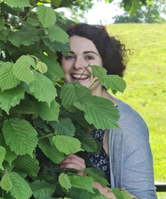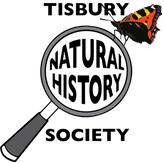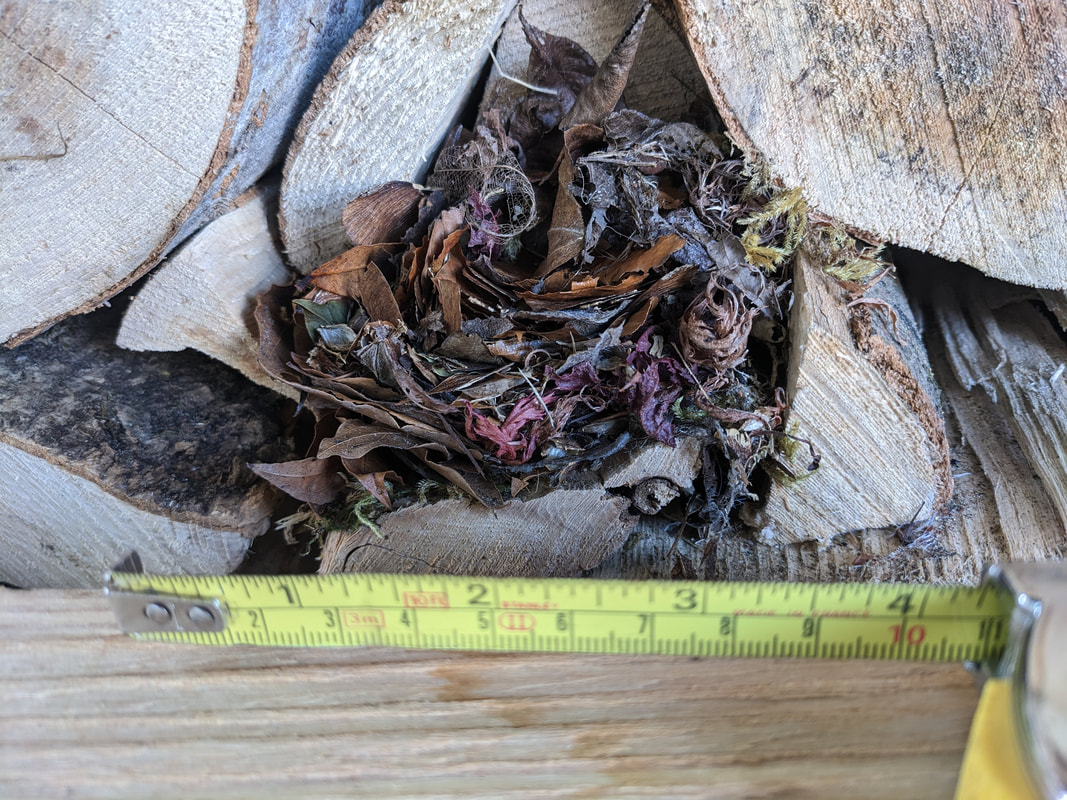|
Sarah Barnsley, of the People’s Trust for Endangered Species, (PTES) presented a talk on 16th February entitled ‘Why Hedgerows matter’.
Sarah talked about some of the wildlife that lives in hedges, illustrated with beautiful slides, and how it is beneficial for them to cut hedges as late in the winter as soil conditions allow, to preserve the fruits as long as possible. She followed on to describe different hedgerow structures which result from different management practices, and how ideally the hedge will have a blended edge of scrub leading further out to long grass. Hedges can be assessed as to how healthy they are, in terms of how many woody species there are making it up, how well connected it is with others or woodland, its width, and how well it’s been managed. Sarah pointed us to the Great British Hedgerow Survey on the PTES website, which scores the overall health of an individual hedge, and provides management advice accordingly. She explained how under-managed hedges can eventually go through the process of succession to eventually turn into a row of trees, whereas an over-managed hedge, cut hard every year to the same height and width will become gappy and open, eventually disappearing. Sarah then described a hedgerow management cycle, which when done properly, rejuvenates the hedge so it keeps its structure and species diversity. This involves the hedge being cut every three years approx. 10 cm longer, along the top and sides, than the last cut. The hedge therefore continues to expand for some years (Sarah suggested between 10 and 40) before being laid or coppiced. Laying involves thinning out and cutting the individual trees near the base and bending them over. Sarah showed us several slides illustrating different styles of this ancient craft before revealing that the most favoured one in her view is ‘conservation’ hedge laying where very little of the hedge is thinned, so it is all laid to form a wide dense well-structured hedge. After the very well presented talk full of fascinating facts and advice Sarah took questions from the large audience (52 in the hall and 11 on-line). Hedges are well loved by the community and some of the questions reflected the concern about the over management of many of our hedges. Sarah fielded them well and the audience, which included at least 6 landowners who went away with plenty of food for thought. by Peter Shallcross All the banner photographs have been changed and everybody who entered the competition has a photograph featured in the updated pages.
We still have a few pages hidden in the Wildlife identification and recording section while Inés gathers more information and they will be made visible once complete. It's been very enjoyable choosing from the beautiful submissions we received and thank you once again. Please do keep the photographs coming, to increase our library. You can send us a message via the Contact form and we'll send you the email address for submissions. Most of the photographs used on the website are in landscape format, especially for the banners, where they need to be of high resolution to cope with the elongation. Portrait photographs will also be useful for illustrating the page content of our new section, so we welcome those as well. This cosy nest was photographed by Andrew Graham and shown to Inés and Debbie who concluded it belonged to a Wood mouse. Having the ruler for scale and its location in a wood pile, helped to identify the animal who'd made it. We're always happy to assist with any identification queries, so if you want to use the contact form first of all, we'll send you the email address for submission.
You may have received information by email or seen the leaflets about the wonderful new project called Nurturing Nature, organised by a collaboration between the Cranborne Chase AONB team, Wiltshire Wildlife Trust, Wiltshire & Swindon Biological Records Centre (WSBRC) and the Chase & Chalke Landscape Partnership.
They want to train 100+ people who have little or no experience in wildlife surveying to help them record wildlife, build understanding about the current biodiversity in the Chase & Chalke area and identify places where habitats could be improved. We hope that many of our members will want to take part. Full details about the courses available within this free training programme are listed on the Chase & Chalke Nurturing Nature Project pages and you can also sign up to the Cranborne Chase enews here. Another way to find out more about volunteering and the types of training on offer is to meet the Nurturing Nature team for Coffee and Cake on Thursday 16th February at the Salisbury Orangery [102 Crane St, Salisbury SP1 2QD] between 10am-1pm. Register your interest by emailing [email protected] You can download the Project leaflets here: Coffee & Cake Mornings and The Nurturing Nature Project. We'll be adding Nurturing Nature Project links to our Resources page too. Our AGM will start at 7.00pm for a brief run through of the minutes of last year’s meeting and the 2022 accounts. We urge as many members as possible to come along. The hall should be open half an hour before we start, so this year you can even enjoy the proceedings with a glass of wine in hand.  The talk will start at 7:30pm and we shall hear from Sarah Barnsley on 'Why hedgerows matter'. Sarah is Hedgerow Officer for the People’s Trust for Endangered Species, and a huge hedgerow enthusiast, working to promote these humble countryside heroes. Hedgerows form a key component of our natural heritage and provide many vital ecosystem services and functions. They connect up our countryside and provide essential food and shelter for much of our wildlife. From nesting birds to hibernating hedgehogs, well-managed hedges can provide abundant resources for animals, birds and all manner of insects. Yet, to maintain a healthy hedgerow network into the future, we need to manage hedgerows according to their natural lifecycle. Readers will have seen regular notices in Focus about workdays at Oysters Coppice. With spring approaching, this small but valuable woodland is ready to come into its own. In February and March, the wild daffodils come into bloom. They look wonderful in early spring sunshine, as drifts of their small, pale yellow trumpets nod in the breeze below the hazel catkins. The wild species is probably the flower about which Wordsworth was writing in his famous poem.
Soon after the daffodils come carpets of bluebells one of the beauties of a British woodland in spring. But the wood is full of other plants and wildlife by virtue of being an ancient woodland. This is the term used to describe an English woodland that is shown to have persisted since 1600 which is when maps became fairly reliable. Ancient woodland is rare, covering only 2.5% of the country. A map from around the turn of the 19/20th Century shows a wood with the current outline, and even depicts a footpath through it running along the same line as today. Having retained woodland cover for so long, ancient woods develop and retain rich communities of plants, animals and fungi not found elsewhere. These are lost when land is cleared for agriculture, and most will not return if a new wood is subsequently replanted on the same site. The wood is on a gentle north facing slope dropping about 45m from top to bottom. The top (southern) end lies on sandstone but most of the wood lies on mudstone and muddy is what the wood gets in winter when the springs and flushes run with water. Where the ground is drier oaks can grow but much of the wood is dominated by hazel, ash, and the damp-loving alder. It is probably the dampness of the ground combined with the north facing slope that saved the wood from clearance for agriculture. Oysters Coppice is just one of several interconnected ancient woodlands in and around Gutch Common, probably all surviving for similar reasons which, combined, provide a significant area of valuable habitat. Coppicing is a woodland management system which crops relatively young growth from regrown stools on a regular rotation, while retaining some longer growing standard trees above. Over centuries this would have provided an annual crop of poles for a variety of uses as well as maintaining woodland cover. This provided a relatively consistent environment within the wood, although the amount of sunlight reaching the woodland floor would vary according to how recent an area of the coppice had been cut. Ash, hazel, and alder respond well to coppicing the latter doing well in the wetter parts of the wood. The coppicing is now undertaken by volunteers to let light in and create the temporary clearings which are so beneficial for wildlife. There is a circular path around the wood which volunteers also maintain. While visitors are welcome at any time, the owners, Wiltshire Wildlife Trust, ask visitors to keep their dogs on leads and not to stray off the path. In so doing they can minimise disturbance to the wildlife communities that have taken centuries to develop. by Andrew Graham |
Photo: Avocets (Izzy Fry)
The headers display photos taken by our members. Do get in touch via the Contact Form if you'd like to submit a photo for selection.
Archives
May 2024
Categories
All
|


 RSS Feed
RSS Feed